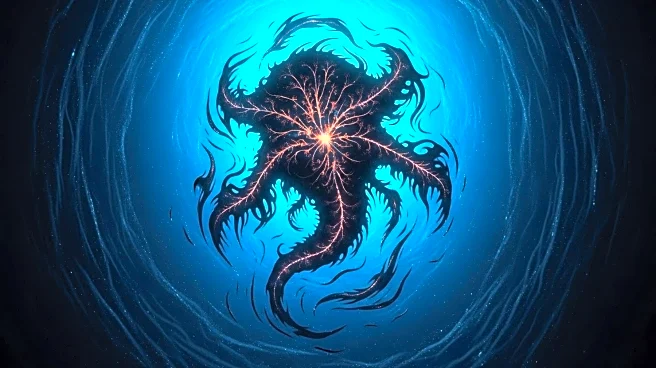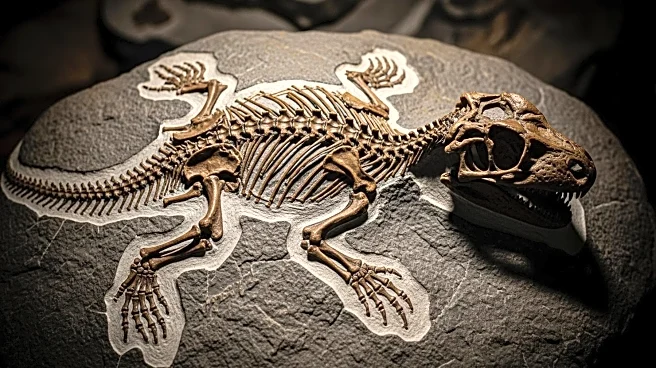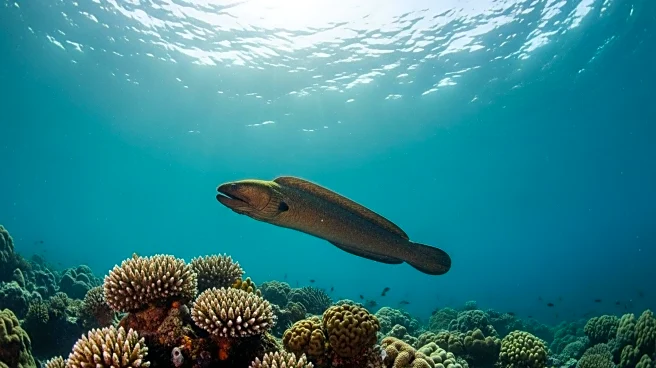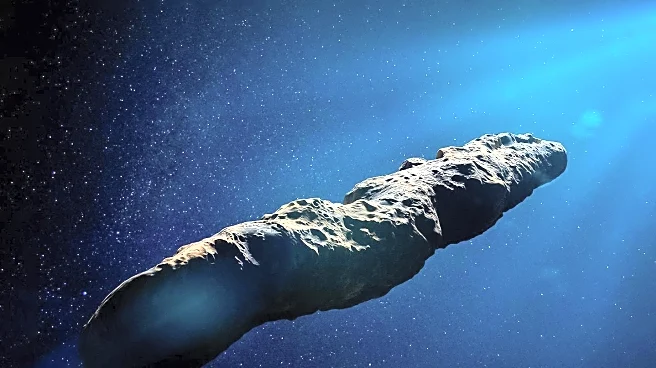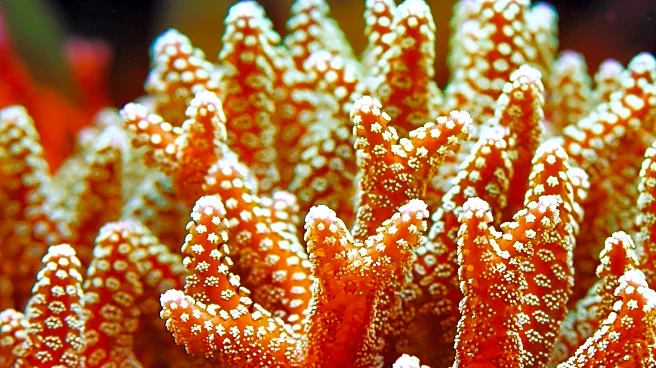What's Happening?
In the arid deserts of North America, the chuckwalla lizard has developed a unique adaptation to survive its harsh environment. This large lizard primarily consumes salty plants and rarely drinks water, obtaining most of its hydration from its diet. To manage the high salt intake, the chuckwalla has evolved specialized glands that filter excess salt from its body, which it then expels through sneezing. This process, colloquially known as 'snalt', involves the expulsion of potassium and sodium bicarbonate salts, which crystallize around the lizard's nostrils. This adaptation is crucial for preventing dehydration and potential salt overdose. Similar adaptations are observed in other lizard species like the marine iguanas of the Galapagos and mangrove monitor lizards, which can drink saltwater. The chuckwalla's ability to thrive in extreme heat, such as in Death Valley, is further supported by its behavioral adaptations, including hibernation during winter and active daytime behavior in summer.
Why It's Important?
The chuckwalla's adaptation highlights the remarkable evolutionary processes that enable species to survive in extreme environments. This biological innovation not only underscores the resilience of desert ecosystems but also provides insights into the potential impacts of climate change on biodiversity. Understanding such adaptations can inform conservation strategies for species facing habitat changes due to global warming. Additionally, the chuckwalla's unique mechanism of salt expulsion could inspire biomimetic applications in technology and medicine, particularly in developing systems for managing salt and hydration in challenging conditions. The study of these lizards also contributes to broader ecological knowledge, emphasizing the interconnectedness of species and their environments.
What's Next?
Further research into the chuckwalla's adaptation could explore the genetic and physiological mechanisms underlying its salt filtration system. Scientists may investigate how these adaptations could be applied to other species or even human technology. Conservationists might focus on protecting the chuckwalla's habitat, ensuring that these lizards continue to thrive despite environmental changes. Additionally, public education efforts, such as those at the Boston Museum of Science, can raise awareness about the importance of preserving desert ecosystems and the unique species that inhabit them.
Beyond the Headlines
The chuckwalla's adaptation raises ethical considerations regarding human impact on natural habitats. As climate change and human activities continue to alter ecosystems, the survival of species like the chuckwalla may depend on proactive conservation efforts. This situation prompts a broader discussion on the responsibility of humans to mitigate environmental damage and preserve biodiversity. The chuckwalla's story also serves as a reminder of the intricate balance within ecosystems and the potential consequences of disrupting this balance.

